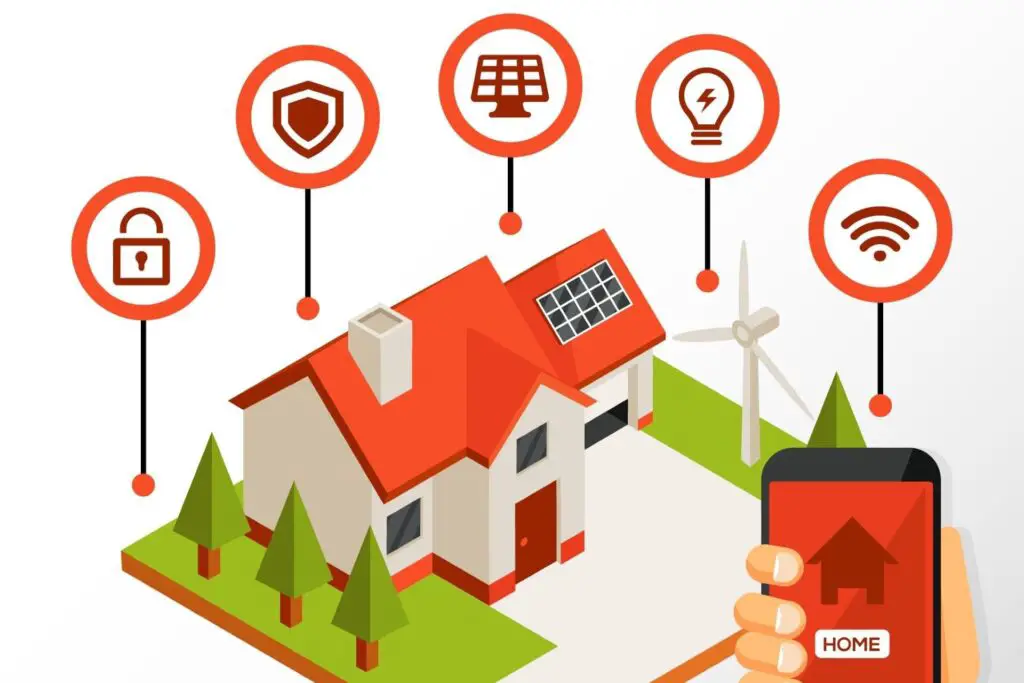As the world increasingly embraces renewable energy sources, solar power has emerged as a leading (Solar Product Price) contender for clean and sustainable electricity generation. Solar products, ranging from solar panels to solar-powered gadgets, have become more accessible to consumers than ever before. However, navigating the market for solar products can be daunting, especially when it comes to understanding prices and evaluating options. In this comprehensive guide, we’ll delve into the world of solar products, exploring their prices, features, and factors to consider when making a purchase decision.
Contents
- 1 Solar Panels (The Backbone of Solar Energy)
- 2 Solar Inverters (Converting Sunlight into Usable Electricity)
- 3 Solar Batteries (Storing Solar Energy for Later Use)
- 4 Solar Gadgets and Accessories (Enhancing Solar Power Usage)
- 5 Factors Influencing Solar Product Prices:
- 6 Navigating the Solar Product Market
- 7 Tips for Making Informed Purchases:
- 8 Conclusion (Empowering Your Solar Journey)
Solar Panels (The Backbone of Solar Energy)
Solar panels are the cornerstone of any solar energy system. They capture sunlight and convert it into electricity through a process called the photovoltaic effect. When shopping for solar panels, several factors influence their price:
a. Panel Type:
- Monocrystalline Panels: These panels are made from single-crystal silicon, offering high efficiency and a sleek black appearance. Monocrystalline panels tend to be more expensive but are also more space-efficient.
- Polycrystalline Panels: Polycrystalline panels are made from multiple silicon crystals, resulting in a lower efficiency compared to monocrystalline panels. However, they are generally more affordable, making them a popular choice for budget-conscious consumers.
b. Efficiency:
Efficiency refers to the percentage of sunlight that a solar panel can convert into electricity. Higher-efficiency panels produce more electricity for the same amount of sunlight. While high-efficiency panels often come with a higher price tag, they may offer better long-term returns by generating more electricity over their lifespan.
c. Brand and Warranty:
The reputation of the solar panel manufacturer can also impact the price. Established brands with a track record of reliability may charge a premium for their products. Additionally, the length and terms of the warranty provided with the panels can affect their price. A longer warranty may indicate higher quality and durability, but it can also contribute to a higher upfront cost.
d. Installation Costs:
Installation costs include labor, permits, mounting hardware, and other accessories required to set up a solar panel system. While these costs are not directly associated with the price of the panels themselves, they significantly impact the overall cost of going solar.

Solar Inverters (Converting Sunlight into Usable Electricity)
Solar inverters play a crucial role in a solar energy system by converting the direct current (DC) electricity produced by solar panels into alternating current (AC) electricity that can be used to power appliances and devices. When considering solar inverters, factors affecting their price include:
a. Inverter Type:
- String Inverters: String inverters are the most common type and are suitable for traditional grid-tied solar systems. They are typically more affordable but may be less efficient in situations with partial shading or panel mismatch.
- Microinverters: Microinverters are installed on each solar panel, offering greater efficiency and flexibility. While microinverters are more expensive per unit, they can be a better option for systems with shading issues or complex roof configurations.
b. Efficiency and Features:
Inverter efficiency, reliability, and additional features such as monitoring capabilities can influence the price. Higher-efficiency inverters may come with a higher upfront cost but can result in greater energy production and savings over time.
c. Brand and Warranty:
As with solar panels, the brand reputation and warranty terms of the inverter manufacturer can affect the price. Investing in a reputable brand with a solid warranty can provide peace of mind and ensure reliable performance.
Solar Batteries (Storing Solar Energy for Later Use)
Solar batteries store excess electricity generated by solar panels for use during times when sunlight is not available, such as at night or during cloudy days. When evaluating solar batteries, consider the following factors:
a. Battery Type:
- Lead-Acid Batteries: Lead-acid batteries are the most affordable option but have a shorter lifespan and lower energy density compared to other types.
- Lithium-Ion Batteries: Lithium-ion batteries offer higher energy density, longer lifespan, and faster charging capabilities but come with a higher price tag.
b. Capacity and Power:
Battery capacity refers to the amount of energy a battery can store, while power rating indicates how much electricity a battery can deliver at a given time. Higher capacity and power ratings generally translate to higher prices.
c. Depth of Discharge (DoD) and Cycle Life:
The depth of discharge (DoD) refers to the percentage of a battery’s capacity that can be used before recharging. Batteries with higher DoD values typically command higher prices but offer greater usable capacity. Similarly, cycle life, which indicates the number of charge-discharge cycles a battery can endure, can affect the price.
d. Brand and Warranty:
Again, the reputation of the battery manufacturer and the warranty terms can influence the price. Investing in a high-quality battery from a trusted brand may result in better performance and longevity.
Solar Gadgets and Accessories (Enhancing Solar Power Usage)
In addition to larger solar components like panels, inverters, and batteries, there is a wide range of solar gadgets and accessories available to consumers. These products harness solar energy for various applications, including:
- Solar Chargers: Portable chargers and power banks that recharge devices like smartphones, tablets, and cameras using solar energy.
- Solar Lights: Outdoor lighting solutions powered by solar panels, ideal for gardens, pathways, and camping.
- Solar Water Heaters: Systems that use solar energy to heat water for residential or commercial use, offering an eco-friendly alternative to traditional water heaters.
- Solar Cookers: Devices that use sunlight to cook food without the need for electricity or fuel, making them ideal for outdoor cooking or emergency preparedness.
Prices for solar gadgets and accessories can vary widely depending on factors such as quality, features, and brand reputation. While some products may be relatively inexpensive, others may command higher prices due to advanced technology or durable construction.
Factors Influencing Solar Product Prices:
Several factors contribute to the prices of solar products, including:
1. Material Costs:
The cost of raw materials, such as silicon for solar panels or lithium for batteries, directly impacts the manufacturing cost of solar products.
2. Technology and Innovation:
Advancements in solar technology, such as improvements in panel efficiency or battery storage capacity, can drive prices up or down depending on the complexity and demand for new features.
3. Scale of Production:
Economies of scale play a significant role in solar product pricing. Large-scale production can help manufacturers reduce costs and pass on savings to consumers through lower prices.
4. Government Incentives and Subsidies:
Government incentives, tax credits, and subsidies for solar energy can make solar products more affordable for consumers by offsetting some of the upfront costs.
5. Installation Costs:
Installation costs, including labor, permits, and equipment, can vary depending on factors such as location, roof type, and system size.
6. Brand and Reputation:
Established brands with a reputation for quality and reliability may charge higher prices for their products compared to lesser-known brands.
As solar energy continues to gain momentum as a clean and sustainable alternative to traditional electricity sources, the market for solar products is expanding rapidly. Understanding the factors that influence prices and evaluating the options available can help consumers make informed decisions when considering solar investments.
Whether you are interested in installing a full-scale solar energy system for your home or simply looking for solar-powered gadgets to enhance your everyday life, there are options available to suit every budget and need. By considering factors such as panel type, efficiency, brand reputation, and installation costs, you can make the most of your investment in solar technology.
Tips for Making Informed Purchases:
- Research Thoroughly: Take the time to research different solar products, read reviews, and compare prices from multiple sources. Websites, forums, and online communities dedicated to solar energy can be valuable resources for gathering information and insights from other consumers.
- Get Multiple Quotes: If you’re considering a solar panel installation, obtain quotes from several reputable solar companies to compare prices, warranties, and installation services. Be sure to ask about any available incentives or financing options that could lower your upfront costs.
- Consider Long-Term Savings: While the upfront cost of solar products may seem high, it’s essential to consider the long-term savings they can provide. Solar panels, for example, can significantly reduce or eliminate your electricity bills over time, potentially saving you thousands of dollars in the long run.
- Evaluate Return on Investment (ROI): Calculate the potential ROI of your solar investment by considering factors such as energy savings, tax incentives, and the resale value of your home. Online calculators and tools can help estimate your payback period and overall savings.
- Think About Future Expansion: If you’re planning to expand your solar energy system in the future, consider purchasing products that are compatible with additional panels or batteries. Investing in a scalable system can save you money on future upgrades and expansions.
- Don’t Sacrifice Quality for Price: While it’s tempting to opt for the cheapest solar products available, be cautious about sacrificing quality for price. High-quality, reliable products may cost more upfront but can offer better performance, durability, and warranties, ultimately providing better value in the long term.
- Explore Financing Options: If the upfront cost of solar products is prohibitive, explore financing options such as solar loans, leases, or power purchase agreements (PPAs). These arrangements allow you to pay for your solar system over time while still enjoying the benefits of clean energy.
- Take Advantage of Incentives: Check with your local government or utility company for available incentives, rebates, and tax credits for installing solar products. These incentives can significantly reduce the cost of your solar investment and improve your financial returns.
Conclusion (Empowering Your Solar Journey)
Whether you’re interested in harnessing solar energy to power your home, charge your devices, or simply reduce your environmental footprint, the world of solar products offers a wealth of options to explore. By understanding the factors that influence prices, evaluating your needs and preferences, and making informed purchase decisions, you can embark on a solar journey that is both financially rewarding and environmentally conscious.
Remember, every step toward solar adoption contributes to a cleaner, more sustainable future for generations to come. So, whether you’re installing solar panels on your roof, upgrading to solar-powered appliances, or simply enjoying the convenience of solar gadgets, know that you’re making a positive impact on the world around you.
As technology continues to evolve and prices continue to fall, the future of solar energy looks brighter than ever. With innovation driving progress and consumers driving demand, solar products are becoming more accessible, affordable, and indispensable than ever before. So, go ahead, embrace the power of the sun, and let your solar journey begin.
